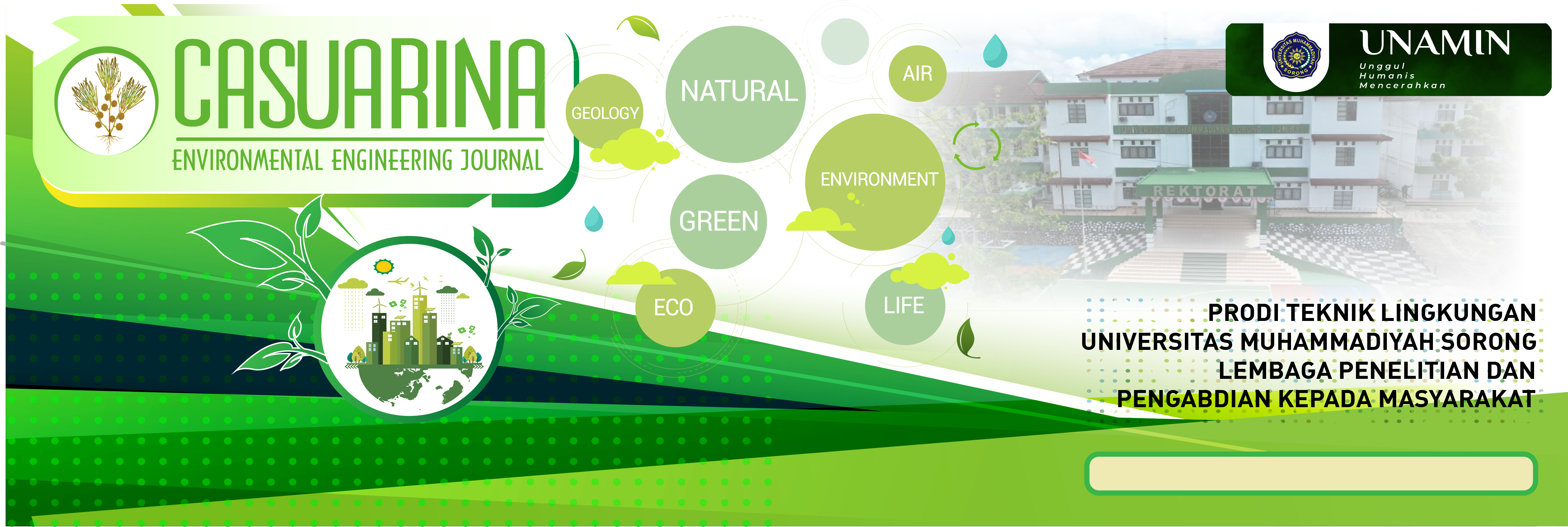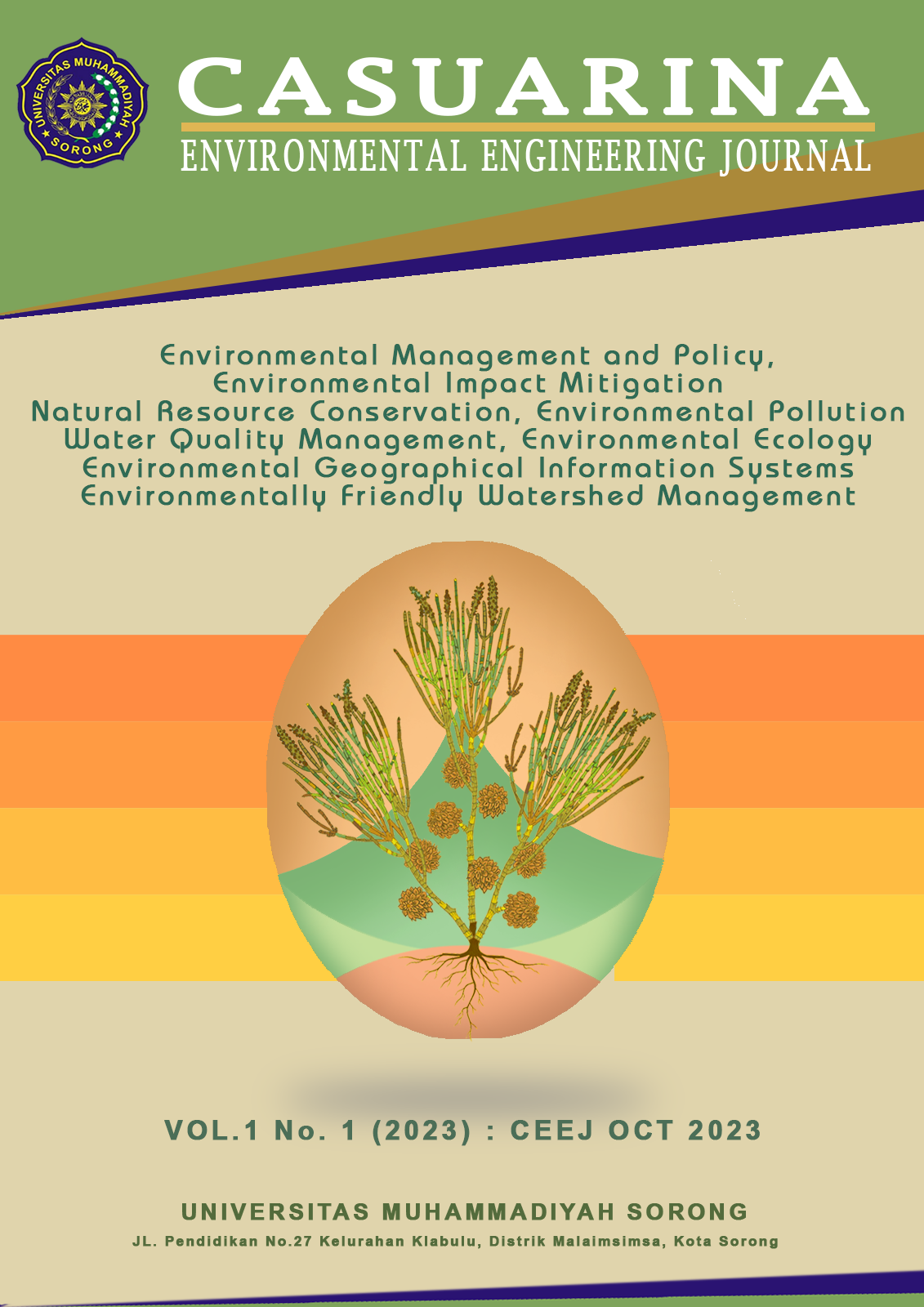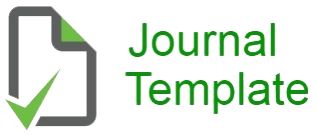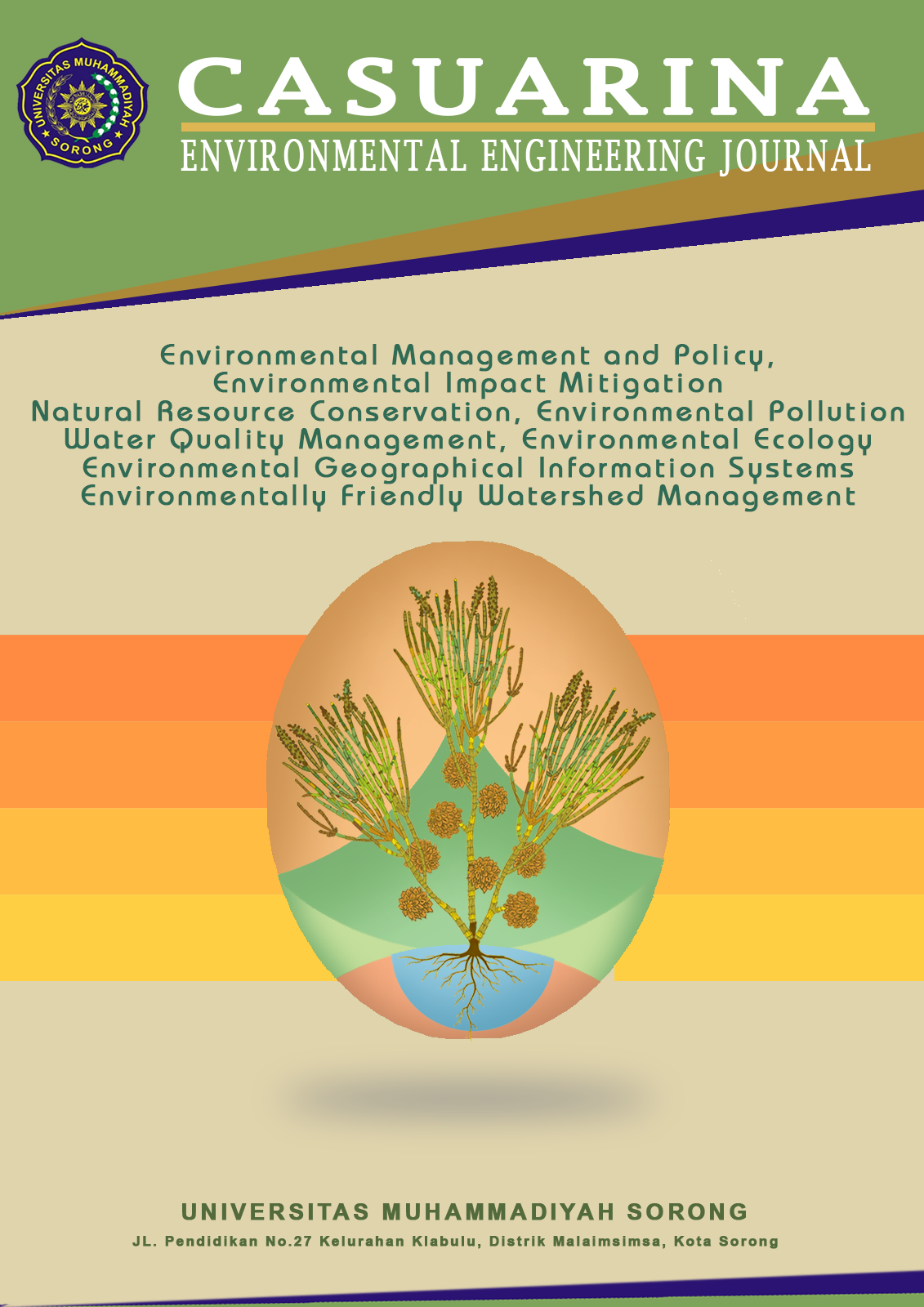ANALISIS KUALITAS AIR SUMUR BOR DI KELURAHAN KLASABI DISTRIK SORONG MANOI KOTA SORONG (STUDI KASUS: KPR VICTORY PERMATA SAKTI)
DOI:
https://doi.org/10.33506/ceej.v1i1.2872Kata Kunci:
Water Quality, BoreholesAbstrak
Kota Sorong sebagai salah satu kota yang memiliki luas wilayah 1.105 km² yang terbagi menjadi 10 Distrik dan 41 Kelurahan, salah satunya di Kelurahan Klasabi Distrik Sorong Manoi yang dimana memiliki luas wilayah 27,87 Ha. Air sangat penting dalam kehidupan sehari-hari, permukaan bumi lebih banyak terdapat kandungan air dari pada daratan. Ekosistem perairan umumnya terbagi menjadi ekosistem air tawar, air laut dan air payau. Tujuan penelitian ini untuk menganalisa kualitas air sumur bor di Kelurahan Klasabi Distrik Sorong Manoi menurut PP no 22 tahun 2021, Menteri Kesehatan No.492/Menkes/Per/IV/2010, dan KEPMENKES No.907 tahun 2002. Dan untuk merencanakan solusi agar air sumur bor tetap dapat di gunakan untuk kebutuhan sehari-hari masyarakat. Penelitian ini menggunakan metode Storet yang dilakukan dengan cara membandingkan data kualitas air dengan baku mutu yang telah ditetapkan sesuai dengan peruntukannya dengan menggunakan alat uji kualitas air yang terdiri dari pH, Turdibity, TDS, Salt, Do, dan Fe. Hasil uji Parameter Fisik dan Kimia dari pengujian hanya 25% yang masuk baku mutu kelas I dimana titik tersebut merupakan titik sampel Klasabi 4, sedangkan 75% yang masuk kriteria baku mutu kelas II, III dan IV dimana titik tersebut merupakan titik sampel Klasabi 1, Klasabi 2, dan Klasabi 3 menurut baku mutu Peraturan Pemerintah No. 22 Tahun 2021 tentang penyelenggaraan perlindungan dan pengelolaan lingkungan hidup.
Referensi
Dwangga M, Pristianto H, Muchtar TKF. Analisis Kualitas Air Sumur Bor Warga Kabupaten Sorong (Studi Kasus Distrik Aimas-Distrik Mariat). Jurnal Teknik Sipil : Rancang Bangun [Internet]. 2020 Nov 19 [cited 2023 Oct 31];6(2):35–43. Available from: https://ejournal.um-sorong.ac.id/index.php/rancangbangun/article/view/1140
Yusman Y, Pallippui H, Apriansah A. PEMETAAN KUALITAS AIR TANAH WILAYAH PESISIR KABUPATEN MAJENE. SENSISTEK:Riset Sains dan Teknologi Kelautan [Internet]. 2019 Oct 1 [cited 2023 Oct 31];159–63. Available from: https://journal.unhas.ac.id/index.php/SENSISTEK/article/view/13276
Marfai MA, King L, Sartohadi J, Sudrajat S, Budiani SR, Yulianto F. PENGARUH AIR ROB TERHADAP KUALITAS AIR SUMUR DI DAERAH PESISIR KOTA SEMARANG. Environmentalist. 2013 Aug 26;28(3):237–48.
Nainggolan AA, Arbaningrum R, Nadesya A, Harliyanti DJ, Syaddad MA. Alat Pengolahan Air Baku Sederhana Dengan Sistem Filtrasi. WIDYAKALA JOURNAL : JOURNAL OF PEMBANGUNAN JAYA UNIVERSITY [Internet]. 2019 Jun 24 [cited 2023 Oct 31];6(0):12–20. Available from: https://ojs.upj.ac.id/index.php/journal_widya/article/view/187
KEPMENKES No.907 Tahun 2002 Tentang Syarat Air Bersih
Peraturan Pemerintah No. 22 Tahun 2021 tentang penyelenggaraan perlindungan dan pengelolaan lingkungan hidup
Peraturan Menteri Kesehatan Republik Indonesia Nomor 492/MENKES/PER/IV/2010
Soemirat (2004 dalam Bambang.A.G.,et.al.2014), pengolaan air minum
Unduhan
Diterbitkan
Cara Mengutip
Terbitan
Bagian
Lisensi
Hak Cipta (c) 2023 Casuarina: Jurnal Teknik Lingkungan

Artikel ini berlisensiCreative Commons Attribution-NonCommercial-ShareAlike 4.0 International License.
Please find the rights and licenses in Casuarina: Environmental Engineering Journal. By submitting the article/manuscript of the article, the author(s) agree with this policy. No specific document sign-off is required.
1. License
The non-commercial use of the article will be governed by the Creative Commons Attribution license as currently displayed on Creative Commons Attribution-NonCommercial-ShareAlike 4.0 International License.
2. Author(s)' Warranties
The author warrants that the article is original, written by the stated author(s), has not been published before, contains no unlawful statements, does not infringe the rights of others, is subject to copyright that is vested exclusively in the author, and free of any third party rights, and that any necessary written permissions to quote from other sources have been obtained by the author(s).
3. User/Public Rights
Casuarina: Environmental Engineering Journal's spirit is to disseminate articles published are as free as possible. Under the Creative Commons license, Casuarina: Environmental Engineering Journal permits users to copy, distribute, display, and perform the work for non-commercial purposes only. Users will also need to attribute authors and Casuarina: Environmental Engineering Journal on distributing works in the journal and other media of publications. Unless otherwise stated, the authors are public entities as soon as their articles got published.
4. Rights of Authors
Authors retain all their rights to the published works, such as (but not limited to) the following rights;
- Copyright and other proprietary rights relating to the article, such as patent rights,
- The right to use the substance of the article in own future works, including lectures and books,
- The right to reproduce the article for own purposes,
- The right to self-archive the article (please read our deposit policy),
- The right to enter into separate, additional contractual arrangements for the non-exclusive distribution of the article's published version (e.g., post it to an institutional repository or publish it in a book), with an acknowledgment of its initial publication in this journal (Casuarina: Environmental Engineering Journal).
5. Co-Authorship
If the article was jointly prepared by more than one author, any authors submitting the manuscript warrants that he/she has been authorized by all co-authors to be agreed on this copyright and license notice (agreement) on their behalf, and agrees to inform his/her co-authors of the terms of this policy. Sentralisasi will not be held liable for anything that may arise due to the author(s) internal dispute. Sentralisasi will only communicate with the corresponding author.
6. Royalties
Being an open accessed journal and disseminating articles for free under the Creative Commons license term mentioned, author(s) aware that Casuarina: Environmental Engineering Journal entitles the author(s) to no royalties or other fees.
7. Miscellaneous
Casuarina: Environmental Engineering Journal will publish the article (or have it published) in the journal if the article editorial process is successfully completed. Casuarina: Environmental Engineering Journal's editors may modify the article to a style of punctuation, spelling, capitalization, referencing, and usage that deems appropriate. The author acknowledges that the article may be published so that it will be publicly accessible and such access will be free of charge for the readers as mentioned in point 3.








